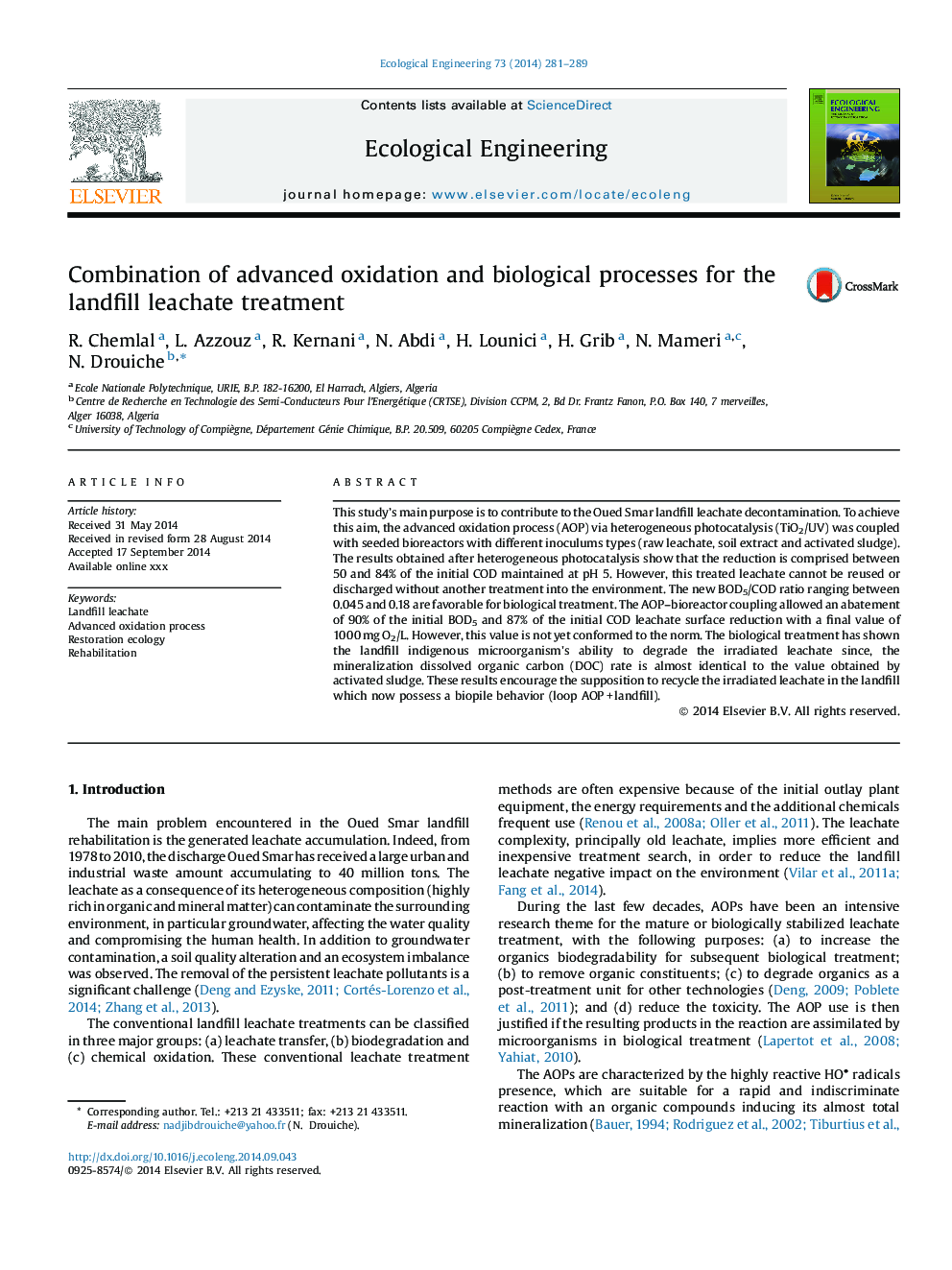| Article ID | Journal | Published Year | Pages | File Type |
|---|---|---|---|---|
| 6301919 | Ecological Engineering | 2014 | 9 Pages |
Abstract
This study's main purpose is to contribute to the Oued Smar landfill leachate decontamination. To achieve this aim, the advanced oxidation process (AOP) via heterogeneous photocatalysis (TiO2/UV) was coupled with seeded bioreactors with different inoculums types (raw leachate, soil extract and activated sludge). The results obtained after heterogeneous photocatalysis show that the reduction is comprised between 50 and 84% of the initial COD maintained at pH 5. However, this treated leachate cannot be reused or discharged without another treatment into the environment. The new BOD5/COD ratio ranging between 0.045 and 0.18 are favorable for biological treatment. The AOP-bioreactor coupling allowed an abatement of 90% of the initial BOD5 and 87% of the initial COD leachate surface reduction with a final value of 1000 mg O2/L. However, this value is not yet conformed to the norm. The biological treatment has shown the landfill indigenous microorganism's ability to degrade the irradiated leachate since, the mineralization dissolved organic carbon (DOC) rate is almost identical to the value obtained by activated sludge. These results encourage the supposition to recycle the irradiated leachate in the landfill which now possess a biopile behavior (loop AOP + landfill).
Related Topics
Life Sciences
Agricultural and Biological Sciences
Ecology, Evolution, Behavior and Systematics
Authors
R. Chemlal, L. Azzouz, R. Kernani, N. Abdi, H. Lounici, H. Grib, N. Mameri, N. Drouiche,
